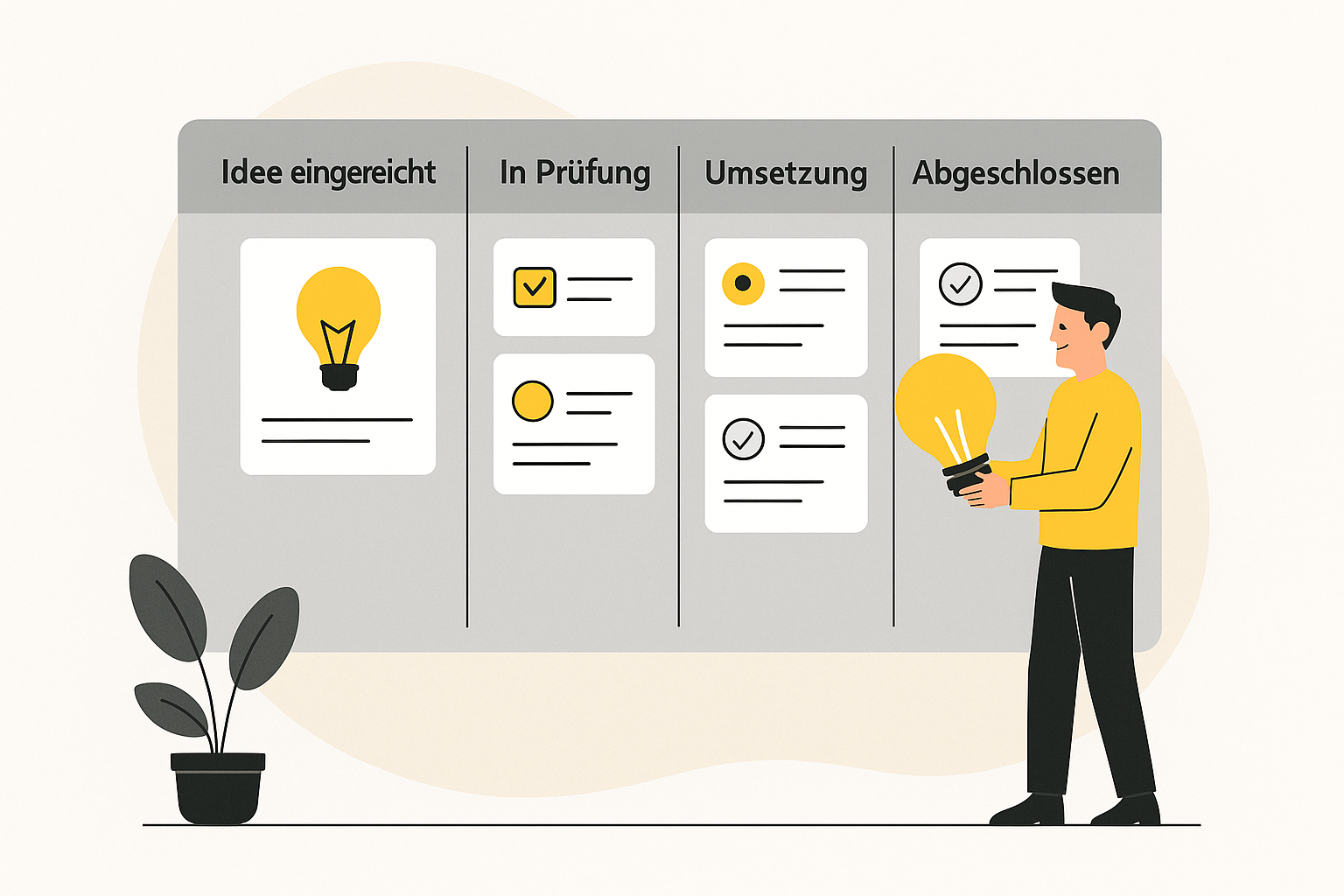The best ideas often emerge where the daily work happens. But all too often, good suggestions fizzle out because the suggestion system in companies still runs as a parallel side process. Yet there’s enormous potential here. It doesn’t have to be that way!
image: vorschlagswesen0.png)
In many companies, the suggestion system lives in the shadows. Yet it is often the people at the operational frontlines who have the best ideas – for more efficient processes, better customer experiences, or entirely new business models. Too often, however, these impulses go nowhere: because there’s no simple way to submit them in a structured way, because they get stuck in evaluation, or because no one takes responsibility for implementation.
So the central question is not: “How many ideas do we have?” but rather: “How many of these ideas are actually being implemented?”
With Falcon as a strategic platform for project portfolio management, the traditional suggestion system becomes a dynamic, digitally integrated process – from idea to implementation.

From Suggestion Box to Strategic Resource
The classic "suggestion box" is outdated. Today’s employees expect their contributions to be seen, evaluated, and taken seriously – and to happen as transparently and promptly as possible. At the same time, companies face pressure to transform more quickly, become more innovative, and make better use of internal knowledge.
The suggestion system of the future is no longer a standalone tool. It is an integral part of the project portfolio. It thrives on clear processes, open interfaces, and a system that connects bottom-up initiatives with top-down strategies. This is exactly where Falcon comes in – not as a collector of ideas, but as a platform for execution.

How Falcon Transforms the Suggestion System
In Falcon, ideas aren’t simply collected – they follow a structured path from suggestion to implementation. Every idea is potentially an actionable measure that contributes to strategic goals. The journey is neither complicated nor slow. On the contrary: Falcon significantly lowers the barrier to implementation. It starts with setting up a dedicated suggestion program within the platform.
Employees can submit their ideas directly – easily and with the option to include a rough description, an initial assessment, and potential impact goals. Instead of unstructured free text, predefined categories offer orientation: What should be improved – cost, quality, time? How realistic is implementation? What investments would be needed? This creates an initial picture – not just of the idea, but of its potential contribution.
Ideas with Impact: Evaluation and Development
A central problem of conventional suggestion processes is their lack of transparency. Falcon, on the other hand, enables evaluation based on objective criteria – such as a combination of expected impact, strategic fit, and feasibility. Supporting this is an intuitive user interface and a customizable evaluation workflow.
A particularly exciting feature: Employees can provide an initial feasibility assessment when submitting their idea. This lowers the entry barrier for evaluation committees and encourages critical reflection by the submitter. Ideas are not judged from the top down – they are evolved collaboratively.

From Suggestion to Action: Seamless Implementation
Once a suggestion shows potential, it can be transferred into Falcon’s active project tree with just a few clicks – including timeline, responsibilities, and desired impact. Integration into the operational workflow occurs without any system breaks. The idea becomes more than a good intention – it becomes a visible, measurable part of the transformation portfolio.
This is where Falcon fundamentally differs from other idea management systems: Where others stop at evaluation, Falcon starts with what matters – implementation.
Collaboration, Not Just Submission
Another advantage of the Falcon approach is its emphasis on collaboration. Ideas rarely emerge fully formed. They need to be refined together. Falcon allows responsibilities to be assigned early and ideas to be jointly developed. The phased progression – from sketch to evaluation to decision – supports this development process.
What’s more: Through regular reporting, for example during portfolio reviews or steering committee meetings, all ideas remain visible. Because what isn’t seen, rarely gets done.


